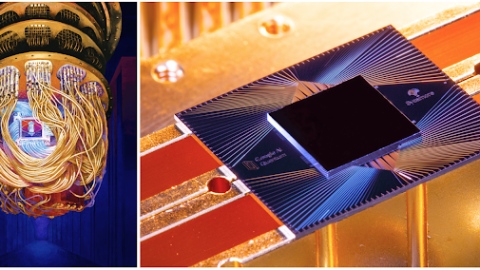Google’s Sycamore beats top supercomputer to achieve ‘quantum supremacy’

- Sycamore is a quantum computer that Google has spent years developing.
- Like traditional computers, quantum computers produce binary code, but they do so while utilizing unique phenomena of quantum mechanics.
- It will likely be years before quantum computing has applications in everyday technology, but the recent achievement is an important proof of concept.
A quantum computer developed by Google achieved “quantum supremacy” after taking 200 seconds to solve a complex problem that the company says would take a supercomputer 10,000 years to solve.
In a blog post published Wednesday, scientists at Google described the achievement as an “important milestone” in quantum computing, one that demonstrates that the company’s designs are “going in the right direction.” Still, the success of Google’s quantum computer, dubbed Sycamore, doesn’t mean that we’re all going to be switching to quantum computers anytime soon. That’s partly because the term “quantum supremacy” is somewhat misleading.
But first, a quick look at how quantum computers function.
How quantum computers differ from traditional computers
Like traditional computers, quantum computers produce binary code to execute computing functions. But instead of using transistors to represent the ones and zeroes, as traditional computers do, quantum computers like Sycamore use quantum bits, or “qubits.”
Qubits are extremely tiny pieces of hardware that act like subatomic particles, utilizing quantum phenomena like entanglement, superposition, and interference. Qubits can represent ones and zeroes. But thanks to superposition, qubits are also able to represent multiple states at the same time, meaning they can make calculations much faster than traditional computers. That’s what helped Sycamore recently outperform a supercomputer.
Sycamore achieved “quantum supremacy,” which occurs when a quantum computer can do something that a traditional computer cannot. To pass this benchmark, Google engineers pit Sycamore against the world’s leading supercomputer, Summit, which is housed at Oak Ridge National Laboratory in Tennessee.
“Summit is currently the world’s leading supercomputer, capable of carrying out about 200 million billion operations per second,” William Oliver, a physicist at the Massachusetts Institute of Technology, wrote in a “News and Views” piece for Nature.
But the contest between Sycamore and Summit involved a highly specific task, one that was specifically designed to give a competitive edge to a quantum computer like Sycamore.
Beating the world’s leading supercomputer
The task involved estimating how likely it was that a processor would produce some “bitstrings” more often than others. As you continue to add information to the equation, it becomes exponentially difficult for traditional computers to conduct the calculations. (You can read more about the experiment here.)
“We performed a fixed set of operations that entangles 53 qubits into a complex superposition state,” Ben Chiaro, a graduate student researcher in the Martinis Group, which conducted the experiment, told Science Daily. “This superposition state encodes the probability distribution. For the quantum computer, preparing this superposition state is accomplished by applying a sequence of tens of control pulses to each qubit in a matter of microseconds. We can prepare and then sample from this distribution by measuring the qubits a million times in 200 seconds.”
“For classical computers, it is much more difficult to compute the outcome of these operations because it requires computing the probability of being in any one of the 2^53 possible states, where the 53 comes from the number of qubits — the exponential scaling is why people are interested in quantum computing to begin with,” Brooks Foxen, another graduate student researcher in the Martinis Group, told Science Daily. “This is done by matrix multiplication, which is expensive for classical computers as the matrices become large.”
But the specific nature of this task has led some to question the utility of quantum computers like Sycamore.
“One criticism we’ve heard a lot is that we cooked up this contrived benchmark problem—[Sycamore] doesn’t do anything useful yet,” Hartmut Neven, a Google engineering director said at a press event on Wednesday. “That’s why we like to compare it to a Sputnik moment. Sputnik didn’t do much either. All it did was circle Earth. Yet it was the start of the Space Age.”
A proof of concept for quantum computing
Although it could be decades until we see quantum computing powering everyday devices, Sycamore serves as a proof of concept that there exists a form of computing that has the potential to be vastly superior to traditional computing.
“This demonstration of quantum supremacy over today’s leading classical algorithms on the world’s fastest supercomputers is truly a remarkable achievement and a milestone for quantum computing,” Oliver wrote in his piece for Nature. “It experimentally suggests that quantum computers represent a model of computing that is fundamentally different from that of classical computers. It also further combats criticisms about the controllability and viability of quantum computation in an extraordinarily large computational space (containing at least the 253 states used here).”





